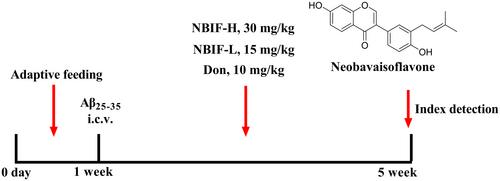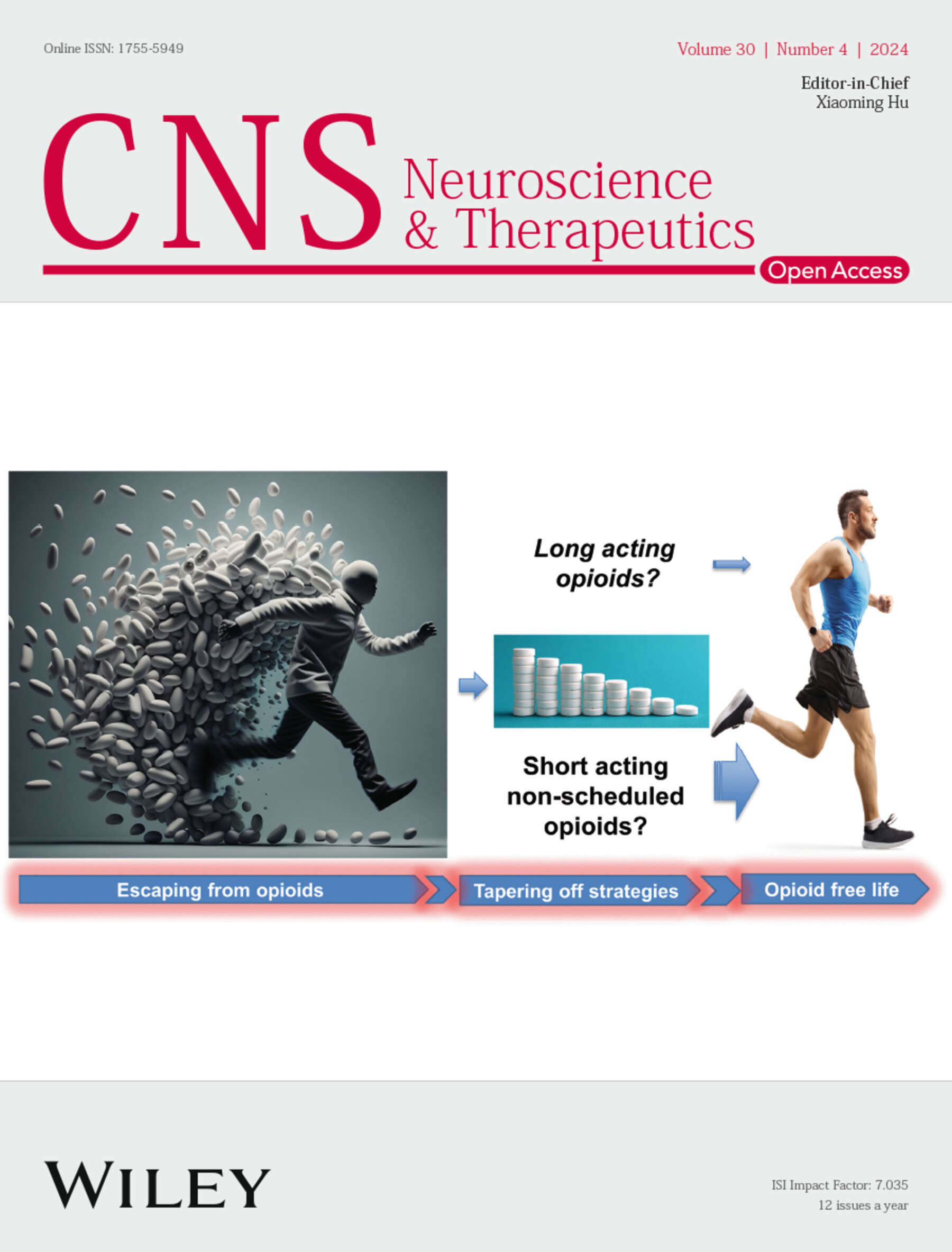Neobavaisoflavone Ameliorates Memory Deficits and Brain Damage in Aβ25-35-Induced Mice by Regulating SIRT1
Abstract
Background
Alzheimer's disease (AD) is a common chronic neurodegenerative disease in older people, and there is no specific treatment that can stop or reverse its progression. Neobavaisoflavone (NBIF) is a flavonoid that has been shown to have neuroprotective effects, but its role in AD has not been revealed. The present study investigated the role and mechanism of NBIF on Aβ25-35-induced brain injury.
Methods
In this experiment, the AD mouse model was established by injection of Aβ25-35 peptides (200 μM, icv), and Donepezil (Don, 10 mg/kg/days), NBIF-L (15 mg/kg/days), and NBIF-H (30 mg/kg/days) were administered orally for 4 weeks. Learning memory, hippocampal pathological changes, pathological markers, apoptosis, oxidative stress, inflammation, immune cells were measured in mice. Network pharmacology combined with the GEO database led to the identification of SIRT1, a key target for NBIF intervention in AD, and levels of SIRT1, p-STAT3 and FOXO1 were measured. In addition, the antagonistic activity of SIRT1 transfection silencing against NBIF in Aβ25-35-induced in N9 cells and N2a-APP69 cells was investigated to assess whether the effects caused by NBIF were mediated by SIRT1.
Results
The results showed that NBIF ameliorated learning memory and hippocampal neuronal damage, reduced pathological markers, apoptosis, oxidative stress and neuroinflammation, and modulated immune cells. SIRT1 is a key target for NBIF intervention in AD, and NBIF upregulates SIRT1 and reduces the expression levels of p-STAT3 and FOXO1. Furthermore, silencing SIRT1 effectively reduced the protective effect of NBIF on Aβ25-35-induced N9 cells and N2a-APP69 cells, which indicated that the protective effect of NBIF on AD is related to SIRT1.
Conclusions
NBIF ameliorated Aβ25-35-induced brain injury by inhibiting apoptosis, oxidative stress, and neuroinflammation, which may be mediated through SIRT1 signaling. These findings provide a rationale for NBIF in the treatment of AD and help facilitate the development of clinical therapeutic agents for AD.


 求助内容:
求助内容: 应助结果提醒方式:
应助结果提醒方式:


